Chobe National Park, tucked into the northern corner of Botswana, is a wild place in every sense of the word. Spanning over 11,000 square kilometers, it’s divided into four distinct regions—Chobe Riverfront, Linyanti, Savuti, and the Ngwenzumba Pans—each offering its own adventure.
Known for its astonishing wildlife, Chobe is home to the Big Five (lion, leopard, Cape buffalo, rhino, and elephant), elusive predators like wild dogs and cheetahs, and in the wet season, more than 450 species of birds. Making it a birder’s paradise. But perhaps Chobe is most famous for its massive elephant population—over 150,000 strong.

Botswana’s landscapes are remote and rugged, allowing animals to roam freely. And roam they do…. right into your campsite!
Here’s how our six wild days unfolded.
Day 1: Along the Chobe Riverfront
We started our Chobe adventure in the northeast, near Kasane, along the lush and lively Chobe Riverfront. While many travellers make a beeline for Savuti or Linyanti, this region is not to be overlooked—especially in the dry season when the river draws animals from all around.
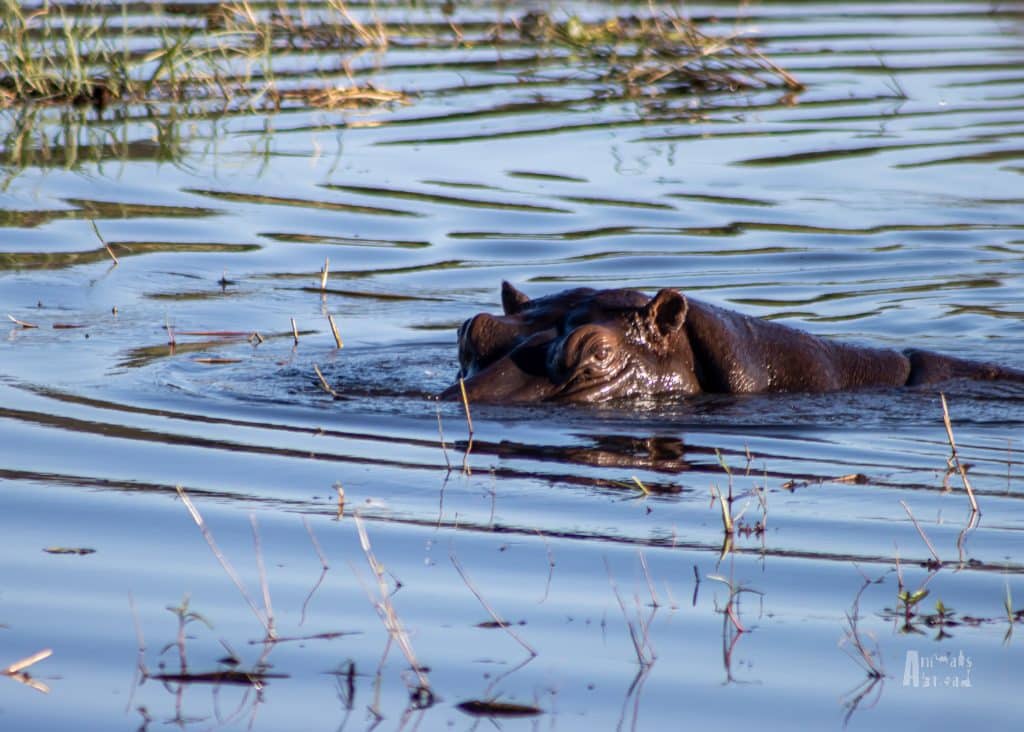
A sunset boat cruise gave us one of our most intimate wildlife encounters yet. Hippos silently surfaced in the marsh, their eyes and ears barely breaking the surface. Elephants cooled off in the shallows while herds of buffalo gathered quietly at the water’s edge.
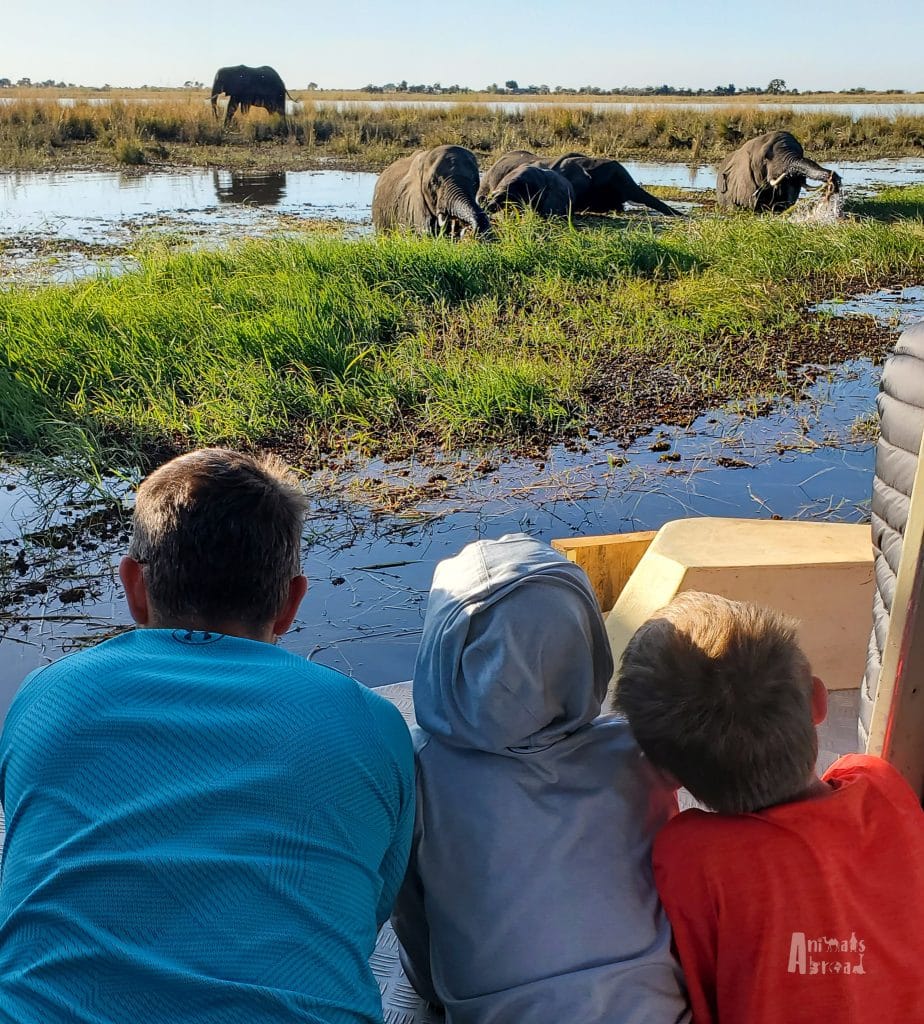
A boat cruise is a fantastic way for kids and adults to experience wildlife from a different perspective—just smooth sailing and up-close views of elephants, hippos, and more.
Learn More: Sunset Cruise on the Chobe River
Day 2: The Road to Linyanti
Our journey to Linyanti marked our first venture off the main roads, and things got wild, fast. We’d heard plenty of warnings from fellow overlanders: Botswana is beautiful with spectacular game viewing but challenging to navigate.
And they weren’t wrong.
The drive from Kasane took five hours through thick sand and narrow forest tracks. Derek deflated the tires for better control, and we bounced past logs, roots, and clusters of potholes. But as soon as we arrived, we knew it was worth every bump.
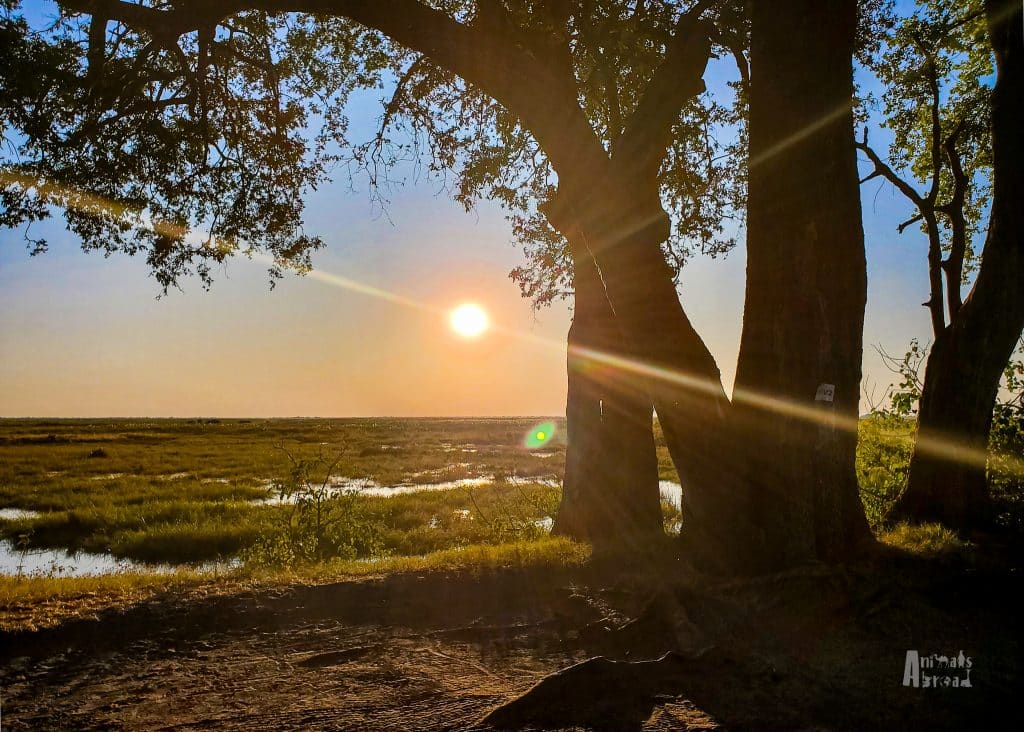
With a woodland landscape, lush floodplains, and plenty of lagoons, Linyanti offers incredible views and is home to many lions, leopards, and wild dogs. In addition, it is well known for its huge elephant population, which migrates along the Linyanti River during the dry months.
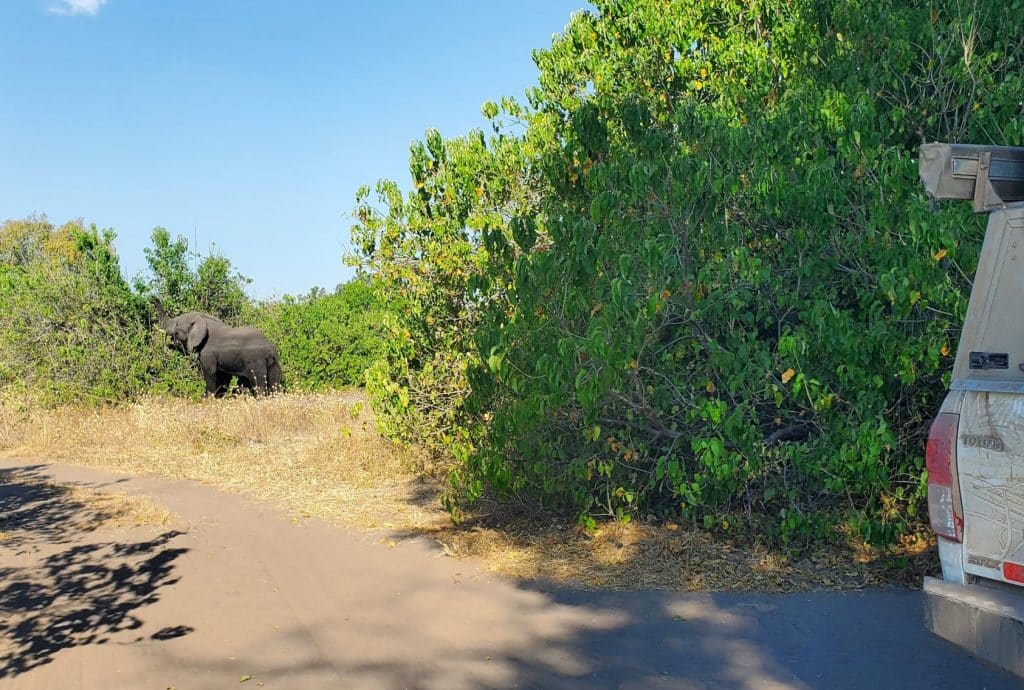
Our campsite overlooked vast green marshlands, with pools of water sparkling under the late-day sun. Elephant tracks crisscrossed the sand around our truck, and the camp manager gave us a quick wildlife rundown: elephants wander through at all hours, and a pride of lions had been spotted nearby the night before. Avoid walking to the ablution block after dark.
Welcome to Linyanti.
Day 3: Footprints & Forest Giants
We woke to the distant grunts of hippos and could just make out their silhouettes in the marsh grasses before us. As we emerged from our tents, we noticed several paw prints around our truck from lions and hyenas that had visited through the night. Not long after, we spotted a bull elephant as we returned from the ablution station. We kept a close eye as we inched by, knowing that some elephants in the park can be aggressive due to poaching in the area.
As the sun rose higher, more elephants emerged from the treeline, as they made their way to the marshlands. We were stunned by how silently these gentle giants could move through the forested area, their grey bodies blending perfectly with the trees and brush. We hadn’t realized how close they were until they stepped into the open.
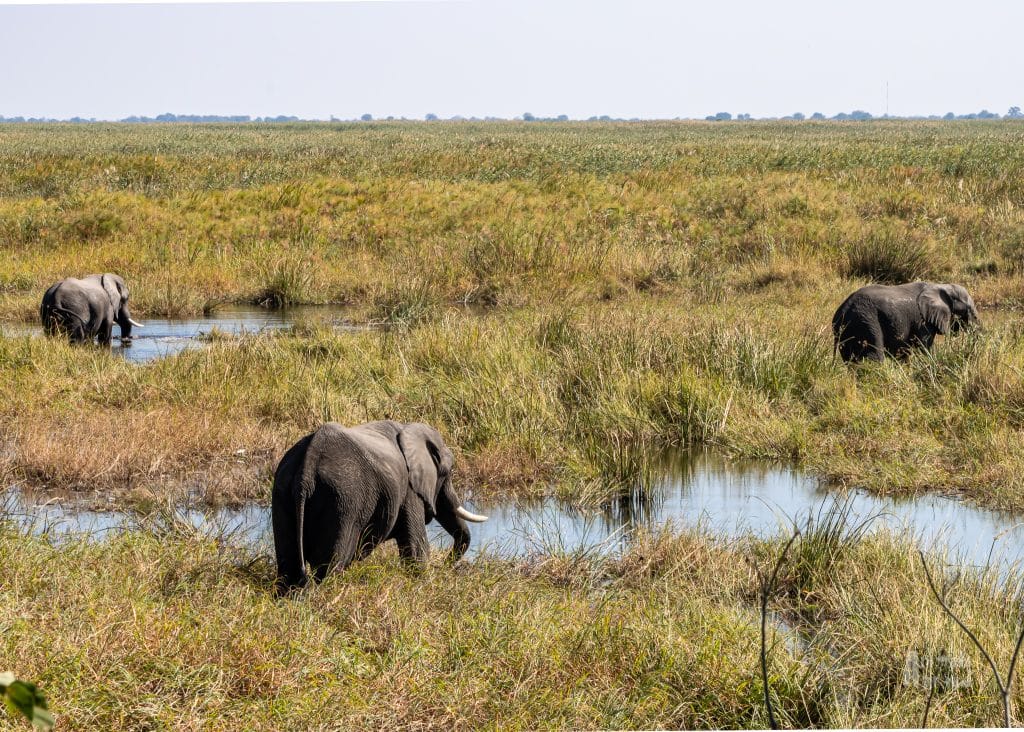
We quietly hid behind trees, so as not to startle them, then as time went on, we pulled our camping chairs to the edge of the site and watched them graze, drink, and cool off in the swamp. There were no fences, no barriers—just us and the elephants. It was humbling and unforgettable.

We set out for another game drive that afternoon, but the park’s layout near Linyanti is small, and the dense terrain made it tough to spot anything. Ultimately, our best sightings were right from the comfort of our campsite. So, we pulled up our chairs and wait for the animals to come to us.

Day 4: A Birthday to Remember in Savuti
Today, Derek turned 40. And what better way to start your birthday than with a few elephants meandering past your breakfast table?

Of course, no safari birthday would be complete without a hiccup. As we packed up to leave Linyanti, we discovered our third flat tire of the trip. Being quite skilled at this point, Derek had it changed, and we were on the road in no time, feeling thankful that it happened in camp, not deep in the bush.
The Savuti area of Chobe is located south of Linyanti. The drive was a mix of compact dirt roads and deep, soft sand. When we arrived, the Savuti campsite was buzzing with fellow travellers—the busiest we’d seen in Chobe. Still, the wild factor remained. We were reminded again to expect nocturnal visitors and to avoid walking to the ablution station overnight.
Our evening game drive in Savuti delivered in a big way. Savuti has diverse terrain, ranging from forested areas to open grassy savannahs and waterholes. In the wet season, herds of elephants and zebras migrate from Linyanti to the lush grasslands. With plenty of food, large predators such as lions and leopards are seen in the area.
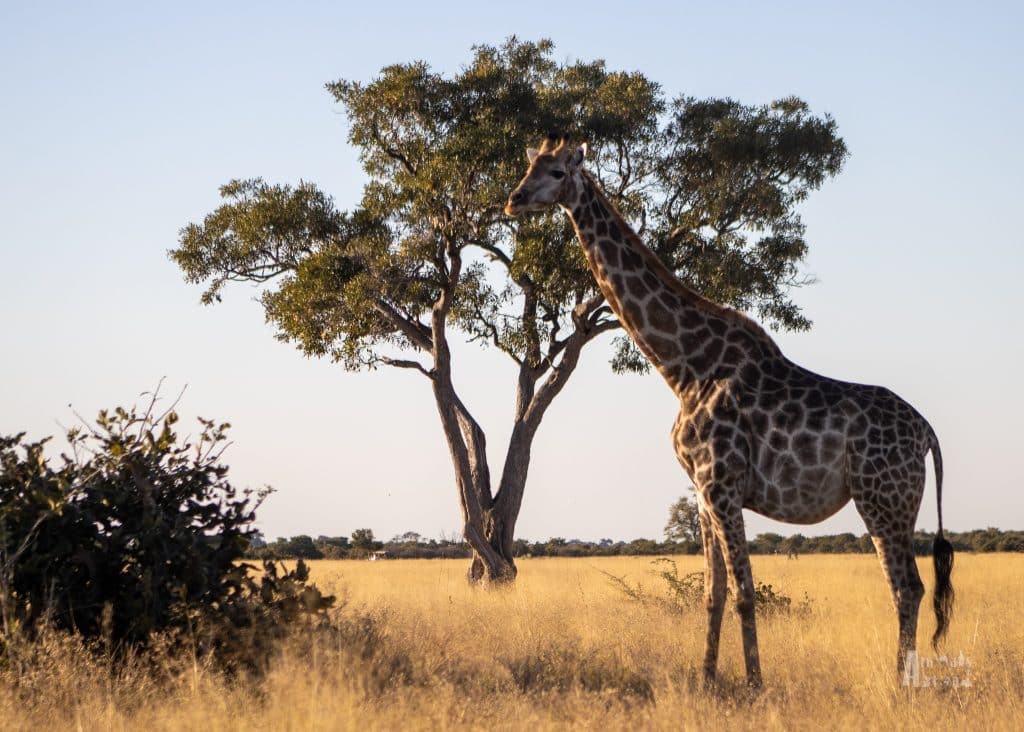
Numerous trails allow for close encounters. We passed giraffes, wildebeest, and cape buffalo. Then, just before sunset, we stumbled upon a small convoy of safari trucks. A female leopard had been spotted. We joined the crowd and soon caught sight of her—elegant and silent—before she slipped into the grass and vanished. It was our first wild leopard sighting, and on Derek’s birthday no less.
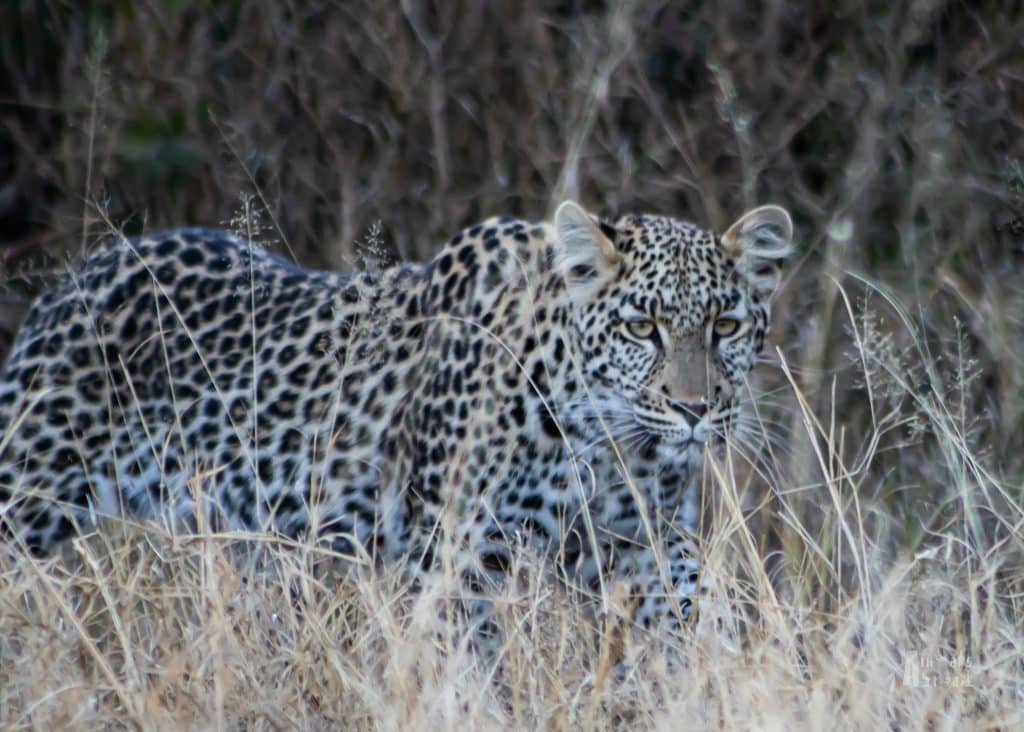
What transpired over the next few hours was nothing short of fate. Back at camp, while cooking over the fire, Derek accidentally burned himself. As we scrambled to treat the minor injury, a friendly camper came over to help and gave us one of the best tips of the trip: skip the main road to Moremi and take the Marsh Road instead. Smoother track, better scenery, and directions to a pride of lions guarding an elephant kill. Their discovery from earlier that day. Now, that’s the kind of birthday gift you can’t plan for.
Day 5: A Close Call
Just after midnight, I woke to a sound I’ll never forget—deep, echoing roars that shook the fabric of our rooftop tent. I anxiously listened as a pride of lions moved through the campground. I felt safe above ground, but the intensity of the sounds made for a restless night.
The next morning, we headed out early and had a fantastic giraffe sighting—a large family, including one drinking at a pond. But the biggest surprise came later that evening.
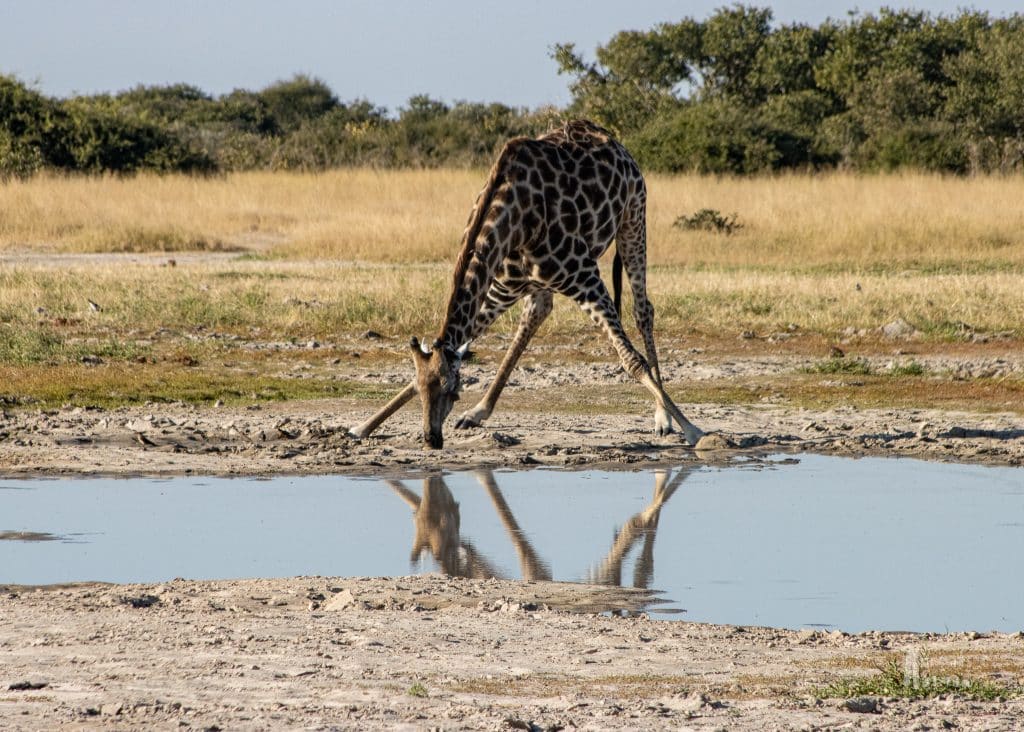
While the campground buzzed with the usual dinner-time activity, Derek and Mason walked to the ablution block. Along the way, Mason noticed rustling in the bushes. When they flashed their light, they saw a leopard crouched just 15 meters away, hidden and ready to pounce. Staying calm, Derek backed away slowly with Mason, keeping his eyes on the cat the whole time. Later, we found out the leopard had passed through the campsite next to ours—and the camper had escaped by climbing the ladder to his rooftop tent.
It was a chilling reminder: In Botswana, you are the guests in their territory.
Day 6: An Unexpected Adventure
We spent our last morning in Chobe National Park exploring Savuti before driving a scenic route east to Moremi Game Reserve. With directions from our neighbours to the lion kill, we set off to Khwai. Little did we know the adventure we were in for. What was supposed to be a 5-hour drive from Chobe to Moremi turned into an 11-hour journey filled with both excitement and danger.
Learn More: Our Best and Worst Day on Safari
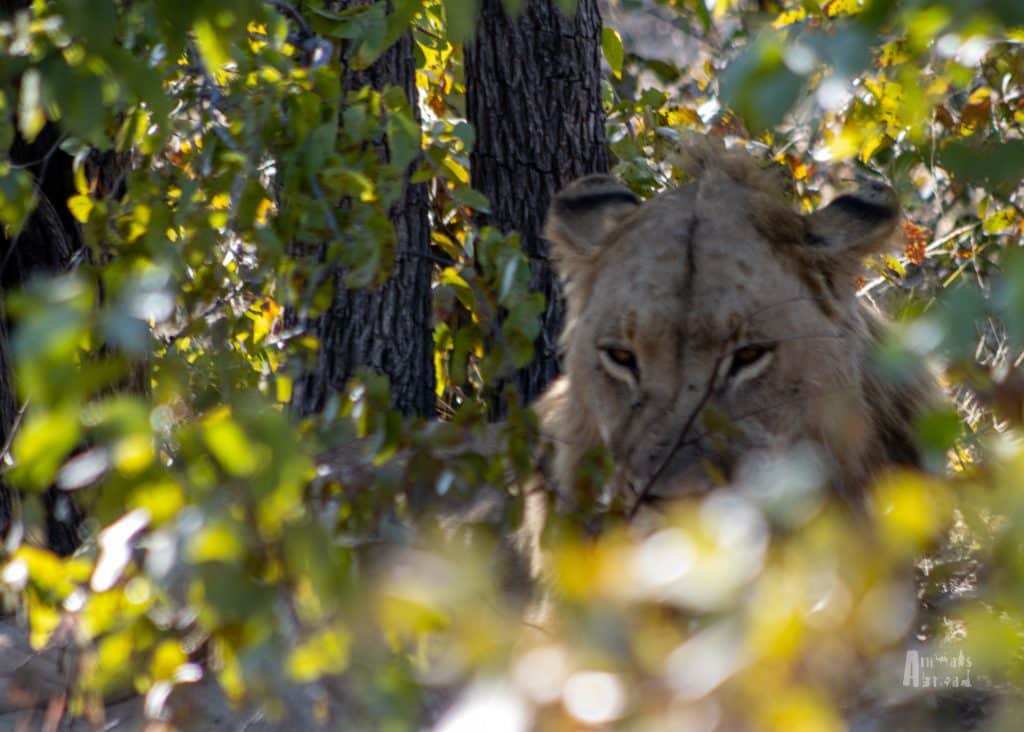
Chobe with Kids: Wild, Real, and Unforgettable
Chobe was wild in every sense of the word. It challenged us as a family and as travellers, but also rewarded us with some of our most intimate wildlife encounters.
From elephants in the misty marshes of Linyanti to leopards prowling through our campground in Savuti, the experience reminded us why we chose this journey in the first place: to explore, to connect, and to share the wild with our kids.
Ready to Start Planning Your Safari Adventure?
Check out these related posts to help plan your trip:
- 51-Day Africa Safari – Part 1: South Africa & Namibia’s Coast
- 51-Day Africa Safari – Part 2: Namibia’s Etosha & Caprivi Strip
- 51-Day Africa Safari – Part 3: Victoria Falls & Botswana
- Our Best and Worst Day on Safari
- Camping Safari in Africa: Know Before You Go
- Camping Across Southern Africa: A Rundown of our Safari Campsites
- Navigating Border Crossings in Southern Africa
- Safari with Kids: Tips from the Road
- Etosha NP with Kids: A Family Safari to Remember
- Exploring the Caprivi Strip with Kids
- Okonjima Family Safari: Where the Wild Things Wait
- The Smoke that Thunders: A Trip to Victoria Falls
- Sunset Cruise on the Chobe River: A Photo Journey
- Living Giants: A Photo Journey Through Nxai Pan National Park

